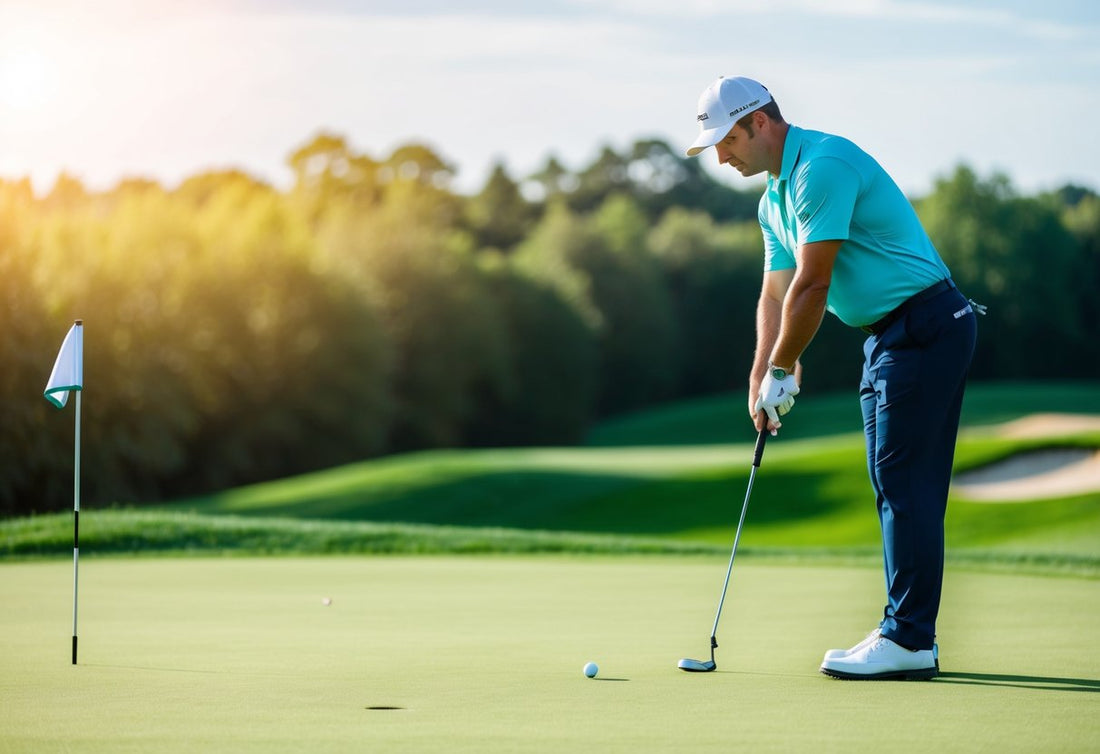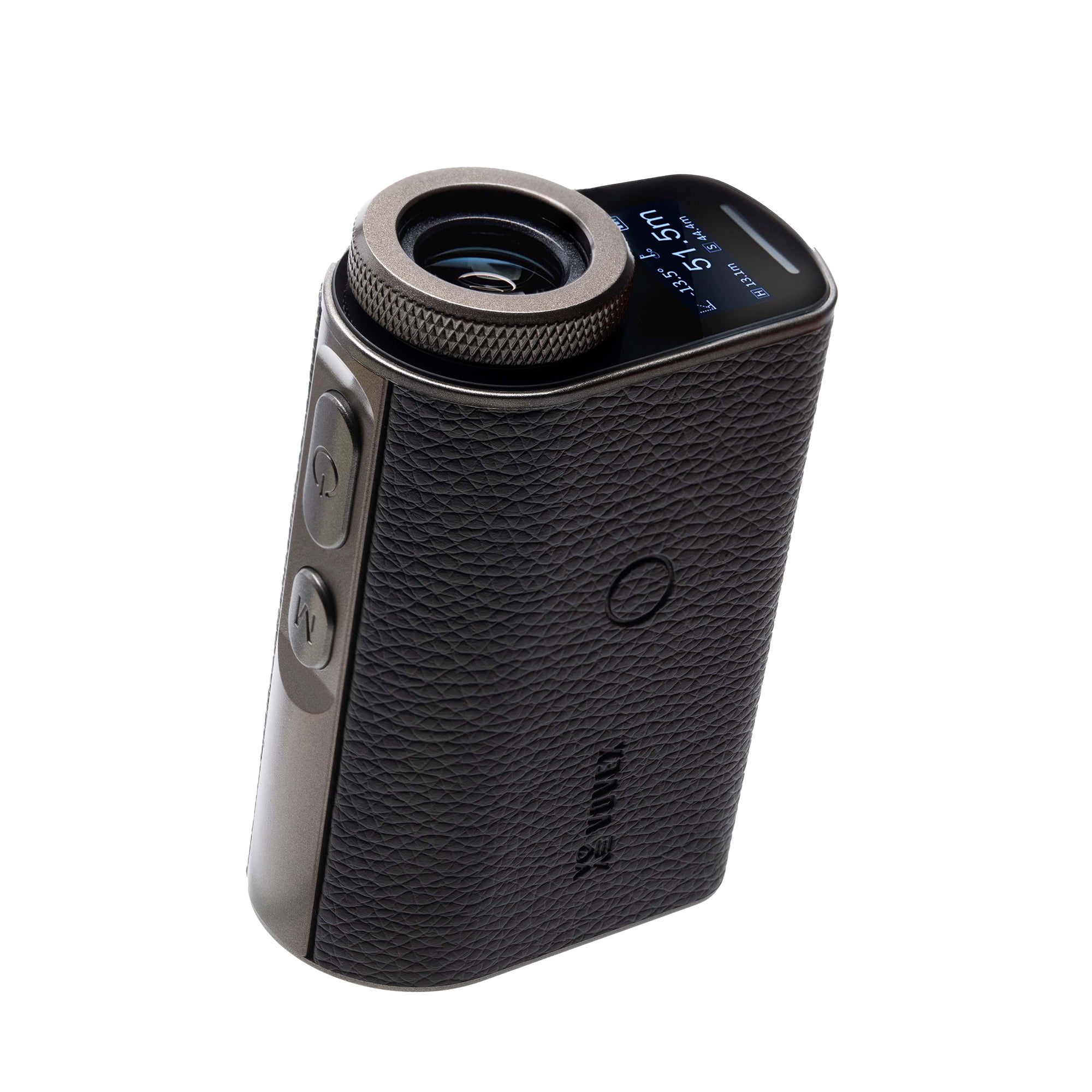Check out our golf rangefinders by Vovex to elevate your game!
When it comes to improving your golf game, having the right tools makes all the difference. One debate that constantly circulates among golfers is whether to invest in a slope or non-slope rangefinder. These devices can dramatically change how you approach each shot, but choosing between them isn't always straightforward.
Slope rangefinders calculate elevation changes and adjust distances accordingly, while non-slope models provide straight-line measurements only—making your choice dependent on your specific needs as a golfer. For casual players who enjoy weekend rounds with friends, a straightforward non-slope option might be sufficient. Tournament players, however, might need both functionalities since slope features aren't allowed in competition.
We've tested dozens of models across different courses and conditions to help you make an informed decision. Price points vary significantly between basic non-slope models starting around $150 and premium slope versions exceeding $400, but the investment pays dividends in improved club selection and scoring.
Key Takeaways
- Slope rangefinders provide adjusted distances accounting for elevation changes while non-slope versions give only straight-line measurements
- Tournament players should consider dual-function models that allow toggling between slope and non-slope modes to maintain compliance with competition rules
- Your skill level, playing frequency, and budget should ultimately guide your rangefinder selection for maximum benefit to your game
Unveiling Golf Rangefinders
Golf rangefinders have revolutionized how players approach their shots, providing precise distance measurements to improve accuracy and course management. These devices have evolved significantly since their introduction to the sport.
Evolution of Rangefinders
Golf rangefinders first appeared in the 1990s, fundamentally changing how players gauge distances on the course. Early models were bulky, expensive, and less accurate than today's sleek devices.
By the early 2000s, laser rangefinders became more accessible to amateur golfers. These devices shoot an invisible beam to calculate distances with remarkable precision.
GPS rangefinders entered the market later, offering pre-loaded course maps and hazard information. Unlike their laser counterparts, they don't require line-of-sight to the target.
The latest models combine cutting-edge optics with advanced algorithms, providing measurements within half a yard of accuracy. Many now include features like vibration confirmation, magnification options, and smartphone connectivity.
Slope vs. Non-Slope Rangefinders: The Basics
The primary difference between slope and non-slope rangefinders is their ability to account for elevation changes. Slope models calculate how uphill or downhill shots affect playing distance, showing both actual and "plays like" distances.
Non-slope rangefinders provide straight-line distance measurements only. They're simpler to use and comply with tournament regulations that prohibit slope functionality during competitive play.
Many golfers find slope rangefinders invaluable for practice rounds and casual play. The technology helps develop a better understanding of how elevation impacts shot selection.
Modern slope models often include a tournament mode that disables slope features, making them legal for competition. This dual functionality provides excellent versatility for serious players.
The price difference between basic models is typically $50-100, with slope versions commanding the premium price point.
Slope Rangefinders
Slope rangefinders have revolutionized how golfers approach elevation changes on the course. These advanced devices factor in the uphill or downhill nature of shots to provide adjusted distances that account for how the ball will actually travel.
Understanding Slope Measurement
Slope rangefinders use built-in inclinometers to measure the angle of elevation between you and the target. This technology calculates how much the incline or decline will affect your shot distance. For example, a 150-yard shot playing 10 degrees uphill might actually play like 165 yards.
The slope function provides two measurements: the actual line-of-sight distance and the "plays like" distance that factors in elevation. Most models display both figures, showing something like "150 yards, plays like 165 yards."
Modern slope algorithms are remarkably precise, accounting for both the angle and how different elevations affect ball flight. We've found that accuracy typically falls within 1-2 yards on most quality units.
Advantages on the Course
Slope technology shines on hilly courses where elevation changes significantly impact club selection. Playing uphill? Your ball won't travel as far. Shooting downhill? You'll need less club than the raw distance suggests.
This feature is particularly valuable for golfers unfamiliar with a course. When you don't know the terrain well, having accurate "plays like" distances helps avoid the frustration of shots coming up short or flying the green.
Key benefit: Slope rangefinders reduce the guesswork in club selection, leading to more accurate approach shots and improved scoring.
Many tournament players use slope rangefinders during practice rounds to learn the course better. While the slope function must be disabled during tournament play, the knowledge gained during practice remains valuable.
Key Features to Look For
Tournament Legal Mode: Essential for competitive golfers, this allows you to disable the slope function with a simple switch or button to make the device legal for tournament play.
Slope-Switch Technology: The best models feature easily toggled slope functions that can be turned on/off without complicated menus.
Display Quality: Look for bright, clear displays that show both actual and slope-adjusted distances in an easy-to-read format, preferably with color differentiation.
Accuracy Level: Premium slope rangefinders offer ±0.5-yard accuracy with slope calculations that account for both angle and atmospheric conditions.
Battery Life: Since the slope function requires additional processing power, better models provide 15+ hours of continuous use without draining batteries quickly.
Non-Slope Rangefinders
Non-slope rangefinders offer pure distance measurements without accounting for elevation changes on the course. These devices provide accurate yardage readings that comply with tournament regulations while encouraging players to develop their own judgment about how elevation affects shots.
Core Functions and Use
Non-slope rangefinders focus exclusively on delivering precise distance measurements to targets. They utilize laser technology to calculate the exact yardage between you and your target point. When you aim at a flagstick, bunker edge, or hazard, the device returns a straightforward distance reading.
These devices are designed for simplicity and tournament play. The USGA and R&A explicitly allow non-slope rangefinders in competition under Rule 4.3, while slope models require features to be disabled.
We've found that most non-slope models offer accuracy within ±1 yard, making them reliable tools for strategic course management. Many players appreciate the clean, uncluttered readings that force them to use their own judgment about elevation effects.
Benefits for Consistent Play
Non-slope rangefinders promote skill development by encouraging players to build their own assessment abilities. By regularly using these devices, golfers learn to better estimate how elevation changes affect their club selection and shot strategy.
Tournament players benefit significantly from practicing with the exact same equipment allowed in competition. This consistency eliminates any adjustment period when moving between practice and tournament rounds.
Non-slope models typically cost $50-150 less than their slope counterparts. The simpler technology also means fewer components that could malfunction, potentially offering greater durability and battery life.
We've noticed many teaching professionals prefer non-slope rangefinders when working with students to focus on fundamental distance control before introducing elevation variables.
What Makes a Great Non-Slope Rangefinder
Key features to look for:
- Accuracy within ±1 yard
- Minimum 400-yard range capability
- 6x or greater magnification
- Pin-locking technology with vibration confirmation
- Water-resistant construction
- Ergonomic, single-hand operation
- Quick measurement response (under 1 second)
Battery life is crucial - the best models offer 2,000+ measurements per charge or battery replacement. Case quality matters too, as these devices travel in golf bags through various weather conditions.
Display clarity ranks high in user satisfaction, with bright, high-contrast readings being essential in varied lighting conditions. We recommend testing the visibility in both bright sunlight and overcast conditions before purchasing.
Weight matters more than you might expect. The ideal non-slope rangefinder weighs between 6-8 ounces, balancing stability when aiming with comfortable handling during a full round.
Making the Choice
Selecting between a slope and non-slope rangefinder ultimately comes down to your specific golfing needs, playing conditions, and personal preferences. The right choice will enhance your course management and potentially improve your scores.
Consider Your Skill Level
Beginners might find non-slope rangefinders more straightforward to use initially. They provide clean, uncomplicated distance readings without additional calculations that could overwhelm new players.
As your game develops, you'll appreciate the added benefits of slope technology. Intermediate players often see the biggest performance jumps when switching to a slope model, as they're skilled enough to utilize the adjusted distances effectively.
Advanced players typically benefit most from slope rangefinders. When you can consistently hit your target distances, knowing the precise slope-adjusted yardage becomes invaluable for shot planning.
We've found that single-digit handicappers almost universally prefer slope models for their precision. However, some scratch golfers prefer non-slope versions to sharpen their natural feel for elevation changes.
Rules and Regulations
Tournament play requires careful consideration of your rangefinder choice. The USGA and R&A explicitly prohibit slope functionality during official competitions under Rule 4.3a.
Many slope rangefinders now include a tournament mode that disables the slope calculation feature. This toggle switch or button is typically indicated by a visual cue that referees can easily verify.
Penalty reminder: Using slope functionality during tournament play can result in disqualification. Always double-check your device's settings before competitive rounds.
For casual rounds and practice, there are no restrictions on slope usage. We recommend taking advantage of slope calculations during practice rounds on tournament courses to build your course knowledge.
Budget and Investment
Non-slope rangefinders typically cost $100-250, making them the more affordable option. Entry-level models from brands like TecTecTec and Precision Pro offer excellent value for casual players.
Slope-enabled devices generally command a $50-150 premium over their non-slope counterparts. Mid-range options from Bushnell, Nikon, and Blue Tees offer the best balance of features and price.
Consider the longevity of your purchase. Premium models with slope ($300-600) often include superior optics, faster readings, and more durable construction that will last for many seasons.
For price-conscious golfers who play courses with significant elevation changes, several "convertible" models offer slope functionality that can be disabled for tournaments at mid-range price points.
Course Topography and Your Needs
The courses you typically play should heavily influence your decision. Flat courses minimize the advantages of slope technology, making a non-slope rangefinder perfectly adequate.
We've found that hillier courses make slope rangefinders substantially more valuable. When elevation changes exceed 10-15 feet per shot, slope-adjusted distances can differ by up to 1-2 clubs.
Regional considerations matter too. Mountainous areas like Colorado, Arizona, and parts of California feature dramatic elevation changes where slope functionality provides significant advantages.
Track your missed shots for a few rounds. If you're consistently short or long when facing uphill or downhill approaches, a slope rangefinder might be the solution to tightening your dispersion pattern.






